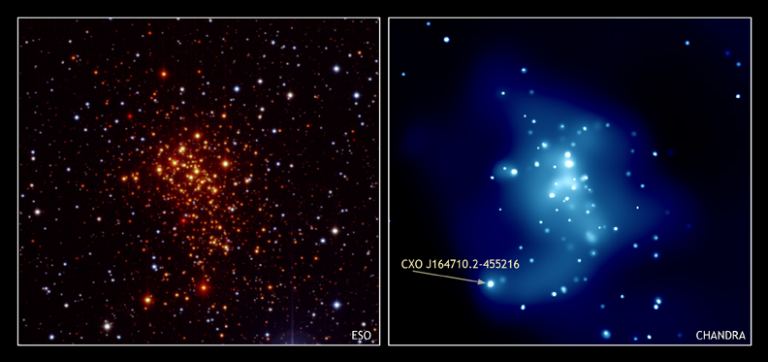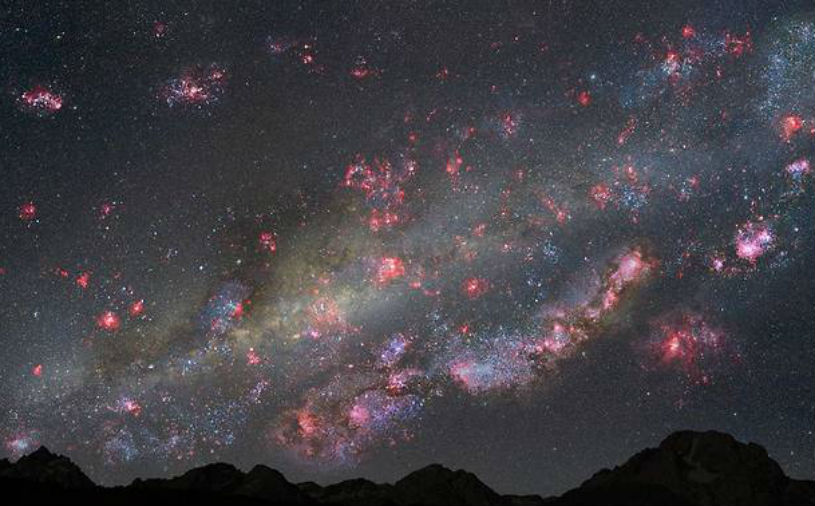Recent observations of Westerlund 1 by the James Webb Space Telescope (JWST) have given astronomers a clearer view of this massive star cluster, hidden behind thick clouds of gas and dust. Using infrared light, JWST has revealed a dense collection of massive stars at different stages of evolution, offering new insights into stellar life cycles and supernova formation.
The Significance of Westerlund 1
Westerlund 1 stands out as one of the most massive and densely packed young star clusters ever identified in the Milky Way. It contains stars that are between 50,000 and 100,000 times the mass of our Sun. These stars, which include Wolf-Rayet stars, OB supergiants, yellow hypergiants, and luminous blue variables, are all incredibly bright and massive. Some of these stars shine with a luminosity of up to a million times that of the Sun. Due to their extreme mass, these stars live short, intense lives, burning through their fuel quickly and dying as explosive supernovae after only a few million years.
This diversity of massive stars, at various stages of their evolution, makes Westerlund 1 an ideal site for studying stellar physics. The cluster formed approximately 4 to 5 million years ago during a burst of star formation, making it very young in astronomical terms. As such, it provides astronomers with a unique opportunity to observe the life cycles of stars in one of the most extreme environments known in the Milky Way.
Why JWST’s Infrared Observations Are Key
One of the biggest challenges of observing Westerlund 1 is its location behind a dense cloud of interstellar gas and dust, which scatters and absorbs most visible light. This has made it difficult for earlier telescopes to study the cluster in detail. However, JWST’s NIRCam can observe in the infrared spectrum, allowing it to penetrate these clouds and reveal the cluster’s stars with unprecedented clarity. The recent observations not only captured the full range of stellar types within Westerlund 1 but also identified patches of red gas surrounding the cluster, lit up by the stars’ radiation.

By using infrared light, JWST has been able to map the structure and composition of the cluster more precisely, shedding light on the conditions that led to its formation and the processes governing the evolution of its stars.
The Role of Westerlund 1 in Stellar Evolution
Westerlund 1 serves as a natural laboratory for understanding how the most massive stars in our galaxy live and die. The stars in this cluster are all relatively young, but their large masses mean they are already well into their stellar evolution. Stars like those in Westerlund 1 burn through their hydrogen fuel much faster than smaller stars like the Sun, and many of them are already approaching the end of their lives.
In the next few million years, Westerlund 1 will become one of the most active sites of supernovae in the galaxy. Astronomers estimate that more than 1,500 supernovae will occur in the cluster over the next 40 million years, as the most massive stars exhaust their fuel and explode, scattering their remains across space. These supernovae will create heavy elements, such as carbon, oxygen, and iron, which will be spread throughout the surrounding region, enriching the interstellar medium and potentially contributing to the formation of new stars and planets.
This ongoing process of stellar death and rebirth is a key aspect of galaxy evolution. The stars in Westerlund 1 are part of a larger cosmic cycle that has been shaping the Milky Way for billions of years.
A Glimpse Into the Milky Way’s Past
One of the most exciting aspects of studying Westerlund 1 is that it offers a window into an earlier era in the Milky Way’s history. Today, the Milky Way is relatively quiet in terms of star formation, producing only one or two new stars per year. However, 10 billion years ago, the galaxy was much more active, churning out dozens or even hundreds of stars annually. Many of these stars formed in massive clusters like Westerlund 1, known as “super star clusters,” which represent the most extreme environments for star formation.

Although most super star clusters in the Milky Way have long since dispersed, Westerlund 1 is one of the few that remain intact. By studying this cluster, astronomers can learn more about how star formation in the Milky Way has changed over time and gain insights into the processes that shaped our galaxy during its most active period of star formation.
The Future of Westerlund 1
Westerlund 1 is expected to evolve significantly in the coming millions of years. As its stars continue to explode as supernovae, the cluster will lose mass, and its gravitational pull will weaken. Over time, Westerlund 1 is likely to transform from an open cluster, where the stars are loosely bound, into a globular cluster, a more compact and tightly bound collection of stars.
Globular clusters are typically much older than open clusters and contain stars that have been gravitationally bound for billions of years. The eventual evolution of Westerlund 1 into a globular cluster will provide astronomers with a unique opportunity to study the transition between these two types of star clusters and to observe how the loss of mass affects the cluster’s structure.
Why This Matters for Astronomy
The study of Westerlund 1 is important not only for understanding the life cycles of massive stars but also for learning more about the environments in which stars and planets form. The dense, crowded conditions of a super star cluster like Westerlund 1 provide a stark contrast to the more isolated environments in which stars like our Sun are born. By comparing these two types of star formation environments, astronomers can better understand the factors that influence the formation of stars and planetary systems.
Conclusion
In the coming years, continued study of Westerlund 1 will help astronomers better understand the life cycles of massive stars and their impact on the evolution of the Milky Way. This cluster, with its brilliant stars and future supernovae, will remain a focal point of astronomical research, providing valuable data on the most extreme environments in our galaxy.



















